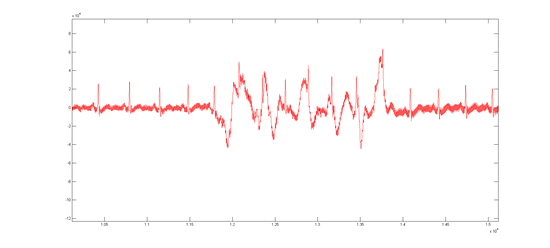Hi,
I'm working on a portable ECG application using the ADS1292. It's a single channel system and we don't have the RLD. I want to implement lead off detection but I'm having some issues. First I tried the DC lead off method, which didn't work (perhaps because I don't have an RLD?). Then I tried the AC method, which works OK in that I'm able to reliably detect lead off. But AC lead off detection seems to introduce another problem - the signal seems to be more sensitive to sudden baseline shift even on slight movement.
For comparison I have attached two figures both measured at the same time on my body. The red signal is on a device that does not have AC lead off enabled, while the blue one is with AC lead off enabled (I have filtered out the AC lead off signal before plotting). As you can see the blue signal has shifted a lot (when I moved my hand) while the red one has not.
Is this the expected trade off from using AC lead off? Is there any way I can overcome this? Or can I use DC lead off without RLD? Any suggestions would be welcome.
I'm running at 500sps and the AC lead off signal is at 125Hz
Thanks a lot!
1. Signal with AC lead off ON
2. Signal with AC lead off OFF
3. 50Hz notch filtered signal with AC lead off OFF (same as above)




